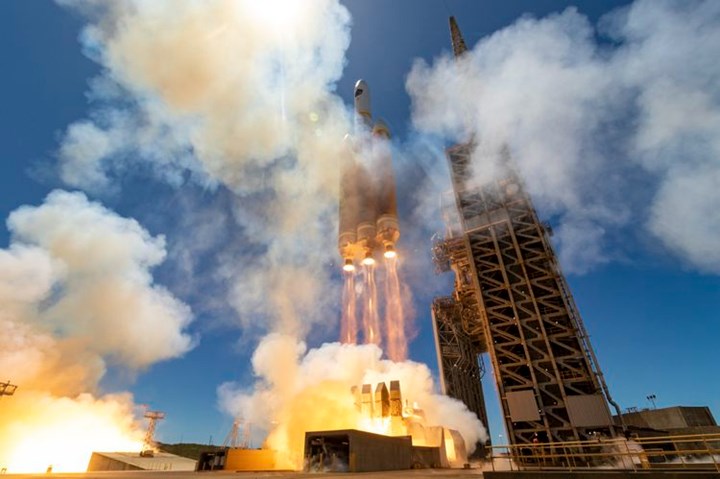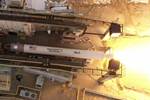Northrop Grumman contributes key composite structures for ULA Delta IV rocket launch
Eleven composite structure such as composite thermal shields, interstage, payload, propellant tanks, produced via hand layup, machining and inspection techniques supported the successful launch.

Successful launch of a ULA Delta IV heavy rocket carrying a critical NRO payload from Vandenberg Air Force Base. Photo credit: United Launch Alliance (ULA).
On April 27, Northrop Grumman Corp. (Falls Church, Va., U.S.) supported the successful launch of a United Launch Alliance (ULA) Delta IV heavy rocket, contributing a total of 11 key large composite structures. The rocket launched a national security payload, designated NROL-82, for the U.S. National Reconnaissance Office (NRO) in support of a national defense mission.
“The successful launch of this Delta IV rocket demonstrates the reliability of our large composite aerospace structures,” says Wendy Williams, vice president, aerospace structures, Northrop Grumman. “We play a vital role with the NRO and ULA, as we have for decades, by providing key launch vehicle structures and propulsion and control subsystems in support of national security missions.”
The largest of the Delta IV family, and the largest rocket in the U.S. fleet, the heavy version features three common booster cores mounted together to form a triple-body rocket.
Northrop Grumman’s structure contributions include three thermal shields that house and protect the engines during flight; three centerbody structures that connect the liquid oxygen (LOX) and liquid hydrogen (LH2) tanks; the payload fairing that provides protection to the payload; the composite interstage on the center common booster core; the nose cones on the two strap-on boosters and one set of X-panel structures that connect the upper stage LOX tank with the upper stage hydrogen tank. The large-scale composite structures measure four to five meters in diameter and range from one to 15 meters in length. Northrop Grumman produced them all using advanced hand layup, machining and inspection techniques at the company’s manufacturing facility in Iuka, Miss.
Other Northrop Grumman products integrated on the ULA Delta IV heavy launch vehicle include four booster separation rocket motors for the launch vehicle manufactured at Northrop Grumman’s Rocket City, West Virginia facility. The motors ignite when the two side-mounted common core stage burns are complete to assist booster separation from the center core.
Northrop Grumman also designed and produced the nozzles for the three Aerojet-Rocketdyne (El Segundo, Calif., U.S.) RS-68 engines, as well as the nozzles’ innovative thermal protection material, which is capable of shielding them from the extreme heat of launch when external temperatures can exceed 4,000ºF. Northrop Grumman manufactured the nozzle at its Promontory, Utah facility.
Additionally, the company manufactured the propellant tank for the Delta IV upper stage roll control system at its Commerce, California facility.
Related Content
-
Pultrusion: The basics
A primer describing what pultrusion is, its advantages and disadvantages, and typical applications.
-
PEEK vs. PEKK vs. PAEK and continuous compression molding
Suppliers of thermoplastics and carbon fiber chime in regarding PEEK vs. PEKK, and now PAEK, as well as in-situ consolidation — the supply chain for thermoplastic tape composites continues to evolve.
-
3D-printed CFRP tools for serial production of composite landing flaps
GKN Aerospace Munich and CEAD develop printed tooling with short and continuous fiber that reduces cost and increases sustainability for composites production.














.jpg;maxWidth=300;quality=90)
